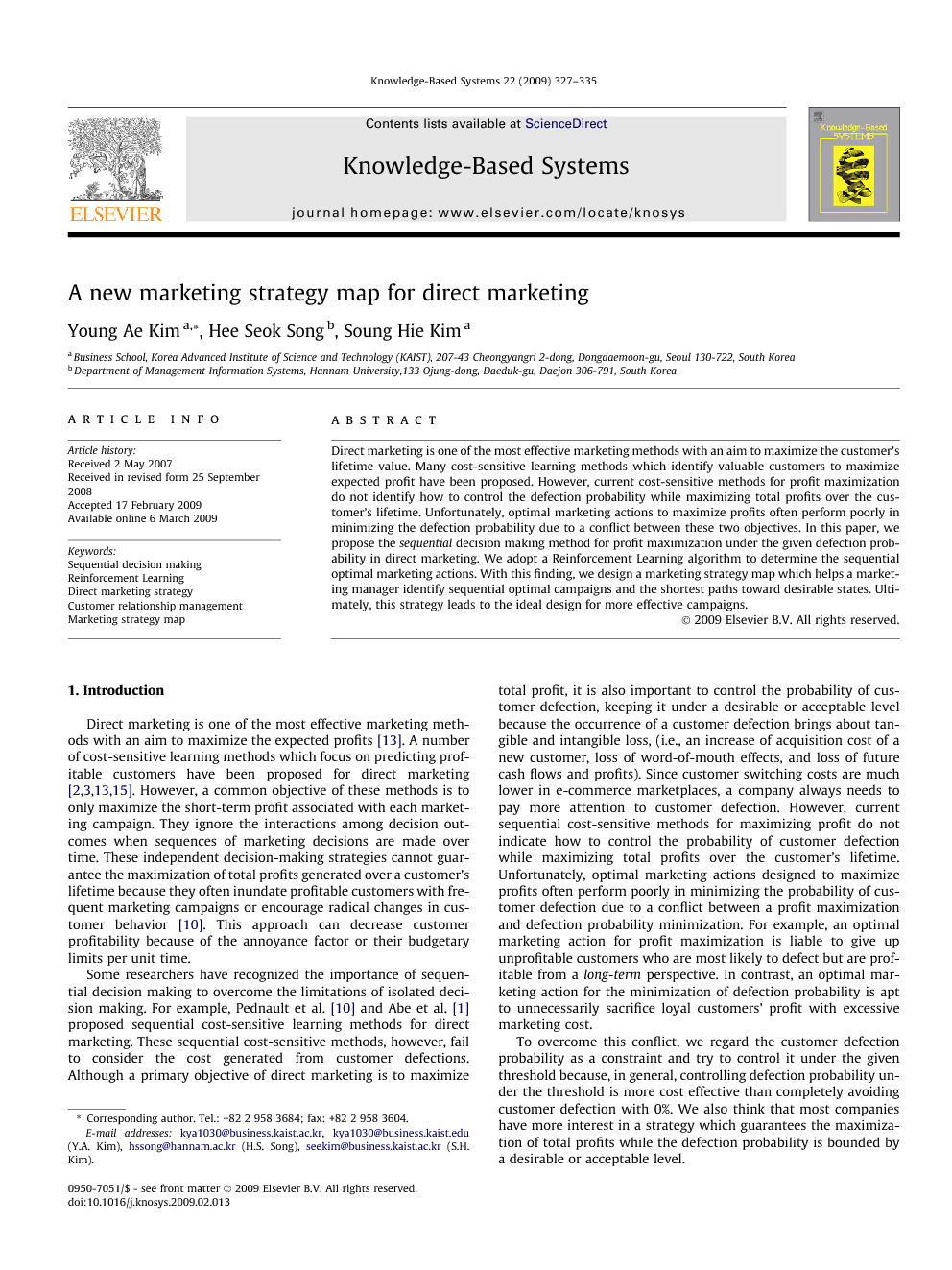ترجمه فارسی عنوان مقاله
نقشه استراتژی بازاریابی جدید برای بازاریابی مستقیم
عنوان انگلیسی
A new marketing strategy map for direct marketing
| کد مقاله | سال انتشار | تعداد صفحات مقاله انگلیسی |
|---|---|---|
| 23576 | 2009 | 9 صفحه PDF |
منبع

Publisher : Elsevier - Science Direct (الزویر - ساینس دایرکت)
Journal : Knowledge-Based Systems, Volume 22, Issue 5, July 2009, Pages 327–335
ترجمه کلمات کلیدی
تصمیم گیری های متوالی - یادگیری تقویتی - استراتژی بازاریابی مستقیم - مدیریت ارتباط با مشتری - نقشه استراتژی بازاریابی
کلمات کلیدی انگلیسی
Sequential decision making,Reinforcement Learning,Direct marketing strategy,Customer relationship management,Marketing strategy map

